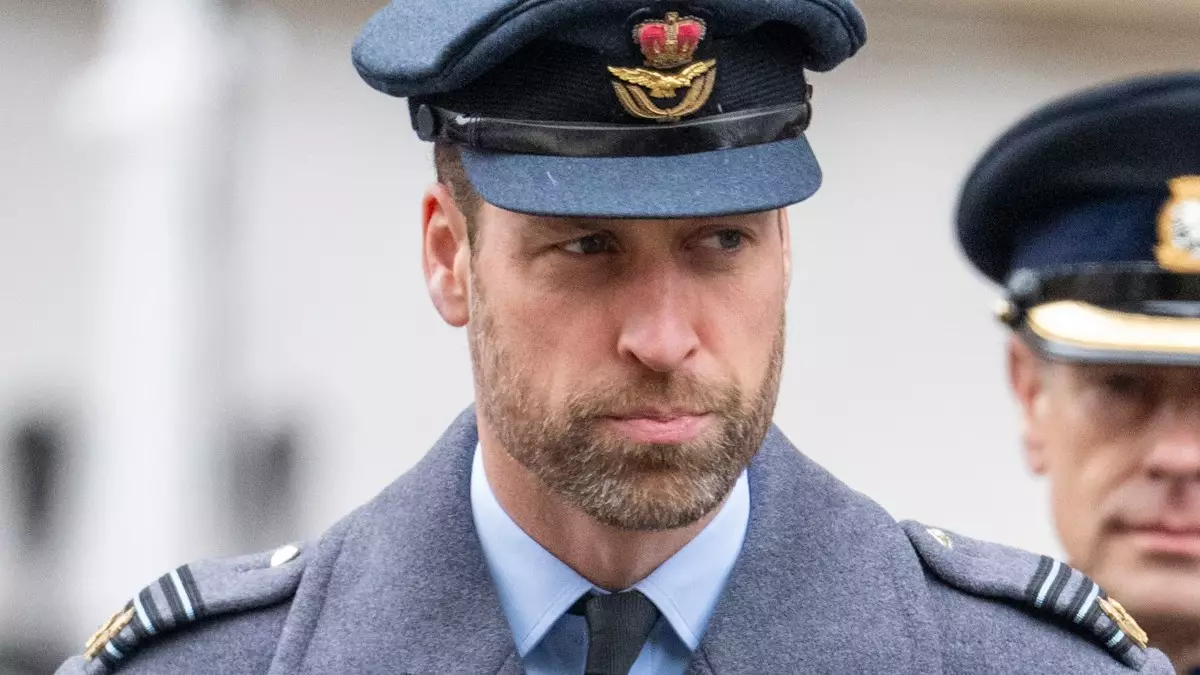Prince William’s decision to sport a beard has sparked fascination and discussions among royal watchers and the public alike. Emerging on the public stage with a fresh and modern look, the future King of Britain is undoubtedly making a style statement that seems to resonate on more than just an aesthetic level. This recent change has brought forth various interpretations regarding royal conventions and traditions while simultaneously challenging the way the British monarchy is perceived in contemporary society.
The Timelessness of Tradition
At the forefront of this conversation is the enduring nature of royal traditions. Historically, members of the British royal family have adhered strictly to certain formal aesthetics, often reflecting a more conservative interpretation of royalty. Worn with pride during significant events such as the Remembrance Sunday service, which Prince William attended recently, the beard can be seen as both a challenge to these traditional norms and an embrace of modern masculinity.
Prince William’s appearance in his Royal Air Force uniform, accentuated by his sharp beard and adorned with a poppy brooch, symbolizes not only his respect for military traditions but also his willingness to represent a shift in royal identity. The juxtaposition of tradition with contemporary fashion can resonate deeply with the public. By embracing a beard, William might be breaking away from the rigid rules that govern royal appearances, signaling a move toward a more relatable and approachable royal image.
William’s choice to grow facial hair could reflect a broader desire to reframe what it means to be part of the monarchy in today’s world. The personal anecdote shared by Prince Harry in his memoir, “Spare,” about their differing views on facial hair illustrates the generational shifts within the royal family. While Harry received the late Queen’s blessing to keep his beard for his wedding, William was bound by traditional rules that dictated a clean-shaven appearance.
As societal norms evolve, so too does the expectation of public figures to remain relatable. Prince William, while still embodying royal decorum, seems to aim for a balance that aligns with modern values. His assertion that he wants to be a prince for his generation resonates strongly in an era where individual expression is celebrated. Growing a beard could serve as a metaphorical shedding of past constraints, allowing him to present himself more authentically in the eyes of his subjects.
The public reaction to Prince William’s new look has been overwhelmingly positive, further showcasing a shift in societal attitudes towards personal grooming and identity. A viral TikTok video, along with numerous congratulatory comments about his appearance, illustrates how a simple change in facial hair can evoke admiration and “swoon-worthy” responses. The digital age has amplified connections between public figures and their audience, creating an environment where style choices can be debated and appreciated more openly.
Many commentators have noted that his beard carries an air of confidence and maturity, qualities that are crucial for a future monarch. As he navigates his role amid increasing scrutiny and public expectations, this fresh approach may well enhance his relatability, allowing him to connect with citizens on a personal level.
While much speculation surrounds the reasons behind Prince William’s decision to embrace facial hair, one thing is clear: this choice signals a thoughtful blending of tradition and modernity. His newfound look resonates with many who appreciate the evolving narrative surrounding royal life. Prince William’s journey appears to encourage a dialogue about what it means to be royal in contemporary society while also maintaining respect for the legacy of the institution.
Prince William’s decision to grow a beard transcends mere fashion; it is a statement laden with meaning in the context of evolving royal dynamics. As he embraces a more modern image, he invites others to reconsider the rigidity surrounding royal conventions and embrace a more approachable narrative for future generations. The impact of this transformation may be felt far beyond the walls of Buckingham Palace, indicating a royal approach that is adaptive, relatable, and, ultimately, very much in tune with the zeitgeist of today’s society.

